2.6 — Long Run Industry Equilibrium
ECON 306 • Microeconomic Analysis • Spring 2022
Ryan Safner
Assistant Professor of Economics
safner@hood.edu
ryansafner/microS22
microS22.classes.ryansafner.com
Firm's Long Run Supply Decisions
Firm Decisions in the Long Run I

AC(q)min at a market price of $6
- Firm earns “normal” economic profits
At any market price below $6.00, firm earns losses
- Short Run: firm shuts down if p<AVC(q)
At any market price above $6.00, firm earns “supernormal” profits (>0)
Firm Supply Decisions in the Short Run vs. Long Run
- Short run: firms that shut down (q∗=0) stuck in market, incur fixed costs π=−f
Firm Supply Decisions in the Short Run vs. Long Run
Short run: firms that shut down (q∗=0) stuck in market, incur fixed costs π=−f
Long run: firms earning losses (π<0) can exit the market and earn π=0
- No more fixed costs, firms can sell/abandon f at q∗=0
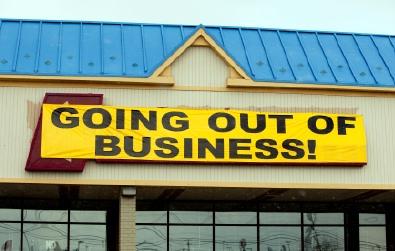
Firm Supply Decisions in the Short Run vs. Long Run
Short run: firms that shut down (q∗=0) stuck in market, incur fixed costs π=−f
Long run: firms earning losses (π<0) can exit the market and earn π=0
- No more fixed costs, firms can sell/abandon f at q∗=0
Entrepreneurs not currently in market can enter and produce, if entry would earn them π>0


Firm Supply Decisions in the Short Run vs. Long Run

Firm Supply Decisions in the Short Run vs. Long Run


Firm's Long Run Supply: Visualizing

When p<AVC
Profits are negative
Short run: shut down production
- Firm loses more π by producing than by not producing
Long run: firms in industry exit the industry
- No new firms will enter this industry
Firm's Long Run Supply: Visualizing

When AVC<p<AC
Profits are negative
Short run: continue production
- Firm loses less π by producing than by not producing
Long run: firms in industry exit the industry
- No new firms will enter this industry
Firm's Long Run Supply: Visualizing

When AC<p
Profits are positive
Short run: continue production
- Firm earning profits
Long run: firms in industry stay in industry
- New firms will enter this industry
Production Rules, Updated:
1. Choose q∗ such that MR(q)=MC(q)
2. Profit π=q[p−AC(q)]
3. Shut down in short run if p<AVC(q)
4. Exit in long run if p<AC(q)

Market Entry and Exit
Exit, Entry, and Long Run Industry Equilibrium I
Now we must combine optimizing individual firms with market-wide adjustment to equilibrium
Since π=[p−AC(q)]q, in the long run, profit-seeking firms will:
Exit, Entry, and Long Run Industry Equilibrium I
Now we must combine optimizing individual firms with market-wide adjustment to equilibrium
Since π=[p−AC(q)]q, in the long run, profit-seeking firms will:
- Enter markets where p>AC(q)

Exit, Entry, and Long Run Industry Equilibrium I
Now we must combine optimizing individual firms with market-wide adjustment to equilibrium
Since π=[p−AC(q)]q, in the long run, profit-seeking firms will:
- Enter markets where p>AC(q)
- Exit markets where p<AC(q)


Exit, Entry, and Long Run Industry Equilibrium II
- Long-run equilibrium: entry and exit ceases when p=AC(q) for all firms, implying normal economic profits of π=0
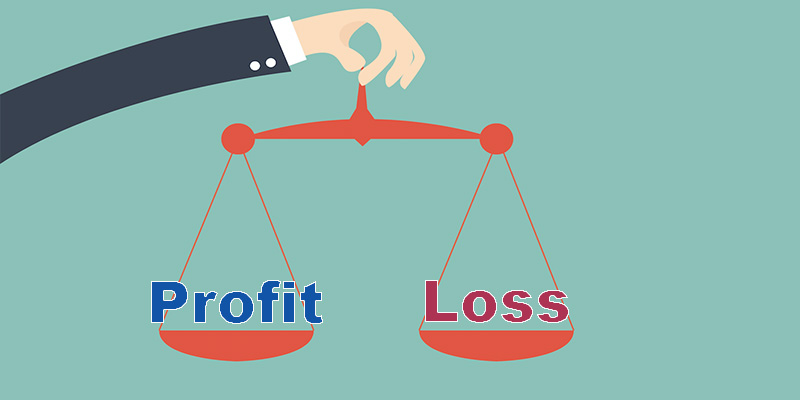
Exit, Entry, and Long Run Industry Equilibrium II
Long-run equilibrium: entry and exit ceases when p=AC(q) for all firms, implying normal economic profits of π=0
Long run economic profits for all firms in a competitive industry are 0
Firms must earn an accounting profit to stay in business

Deriving the Industry Supply Curve
The Industry Supply Curve
Industry supply curve: horizontal sum of all individual firms' supply curves
- recall: (MC(q) curve above AVCmin) (shut down price)
To keep it simple on the following slides:
- assume no fixed costs, so AC(q)=AVC(q)
- then industry supply curve is sum of individual MC(q) curves above AC(q)min
Industry Supply Curves (Identical Firms)



Industry Supply Curves (Identical Firms)



- Industry supply curve is the horizontal sum of all individual firm's supply curves
- Which are each firm's marginal cost curve above its breakeven price
Industry Supply Curves (Identical Firms)



- Industry demand curve (where equal to supply) sets market price, demand for firms
Industry Supply Curves (Identical Firms)



Short Run: each firm is earning profits p>AC(q)
Long run: induces entry by firm 3, firm 4, ⋯, firm n
Industry Supply Curves (Identical Firms)



Short Run: each firm is earning profits p>AC(q)
Long run: induces entry by firm 3, firm 4, ⋯, firm n
- Long run industry equilibrium:
Industry Supply Curves (Identical Firms)



Short Run: each firm is earning profits p>AC(q)
Long run: induces entry by firm 3, firm 4, ⋯, firm n
Long run industry equilibrium: p=AC(q)min, π=0 at p= $6; supply becomes more elastic
Economic Rents, Profits, & Competition
Back to Zero Economic Profits
- Recall, we've essentially defined a firm as a completely replicable recipe (production function) of resources
q=f(L,K)
- “Any idiot” can enter market, buy required (L,K) at prices (w,r), produce q∗ at market price p and earn the market rate of π
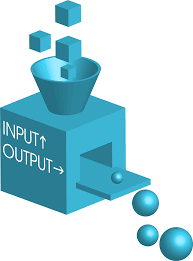
Back to Zero Economic Profits
Zero long run economic profit ≠ industry disappears, just stops growing
Less attractive to entrepreneurs & start ups to enter than other, more profitable industries
These are mature industries (again, often commodities), the backbone of the economy, just not sexy!

Back to Zero Economic Profits
All factors being paid their market price
- i.e. their opportunity cost — what they could earn elsewhere in economy
Firms earning normal market rate of return
- No excess rewards (economic profits) to attract new resources into the industry, nor losses to bleed resources out of industry

Back to Zero Economic Profits
But we've so far been imagining a market where every firm is identical, just a recipe “any idiot” can copy
What about if firms have different technologies or costs?

Industry Supply Curves (Different Firms) I
Firms have different technologies/costs due to relative differences in:
- Managerial talent
- Worker talent
- Location
- First-mover advantage
- Technological secrets/IP
- License/permit access
- Political connections
- Lobbying
Let's derive industry supply curve again, and see how this may affect profits
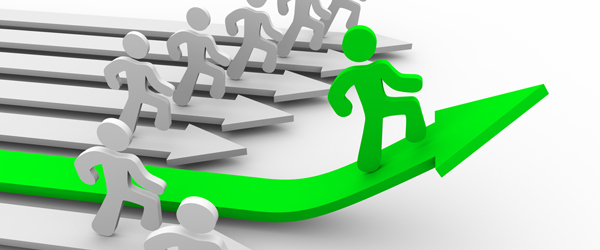
Industry Supply Curves (Different Firms) II



Industry Supply Curves (Different Firms) II



- Industry supply curve is the horizontal sum of all individual firm's supply curves
- Which are each firm's marginal cost curve above its breakeven price
Industry Supply Curves (Different Firms) II



Industry Supply Curves (Different Firms) II



- Industry demand curve (where equal to supply) sets market price, demand for firms
Industry Supply Curves (Different Firms) II



- Industry demand curve (where equal to supply) sets market price, demand for firms
- Long run industry equilibrium: p=AC(q)min, π=0 for marginal (highest cost) firm (Firm 2)
Industry Supply Curves (Different Firms) II



- Industry demand curve (where equal to supply) sets market price, demand for firms
- Long run industry equilibrium: p=AC(q)min, π=0 for marginal (highest cost) firm (Firm 2)
- Firm 1 (lower cost) appears to be earning profits...(we’ll come back to this)
Economic Rents and Zero Economic Profits I
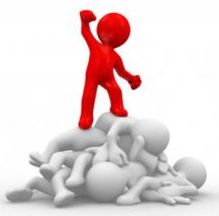
Long-run equilibrium p=AC(q)min of the marginal (highest-cost) firm
The marginal firm earns normal economic profit (of zero)
- Otherwise, if p>AC(q) for that firm, would induce more entry into industry!
Economic Rents and Zero Economic Profits I

“Inframarginal” (lower-cost) firms are using resources that earn economic rents
- returns higher than their opportunity cost (what is needed to bring them into this industry)
Economic rents arise from relative differences between resources
Economic Rent
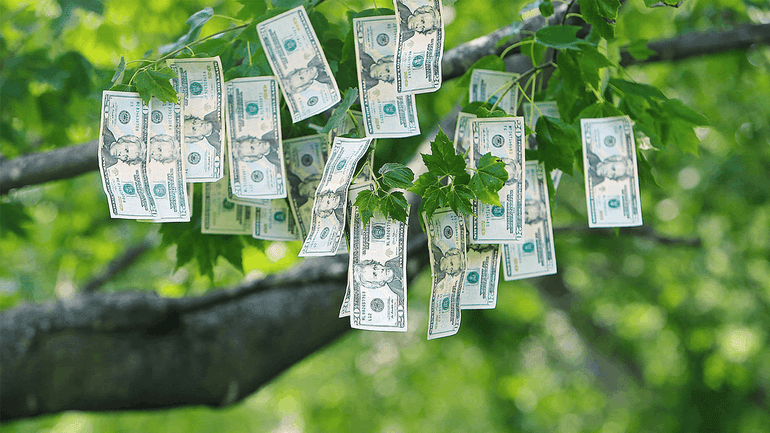
Economic rent: a return or payment for a resource above its normal market return (opportunity cost)
Has no allocative effect on resources, entirely “inframarginal”
A windfall return that resource owners get for free
Sources of Economic Rents

- Some factors are relatively scarce in the whole economy
- (talent, location, secrets, IP, licenses, being first, political favoritism)
Firms Using Resources with Economic Rents

Inframarginal firms that employ these scarce factors gain a short-run profits from having lower costs/higher productivity
...But what will happen to the prices for their scarce factors over time?
Economic Rents Examples


Economic Rents and Zero Economic Profits

In a competitive market, over the long run, profits are dissipated through competition
- Rival firms willing to pay for the scarce factor to gain an advantage
Competition over acquiring the scarce factors pushes up their prices
- i.e. higher costs to firms of using the factor!
Rents are included in the opportunity cost (price) for inputs over long run
- Must pay a factor enough to keep it out of other uses
Economic Rents and Zero Economic Profits

From the firm’s perspective, over the long-run, rents are included in the price (opportunity cost) of the scarce factor
- Must pay a factor enough to keep it out of other uses
Firm does not earn the rents, they raise firm's costs and squeeze profits to zero!
Economic Rents Reduce Profits



- Short Run: firm that possesses scarce rent-generating factors has lower costs, perhaps short-run profits
Economic Rents Reduce Profits



Short Run: firm that possesses scarce rent-generating factors has lower costs, perhaps short-run profits
Long run: competition over those factors pushes up their prices, raising costs to firm, until its profits go to zero as well
- Increase in fixed cost (scarce factor), raising AC(q), which now includes rents (more info here)
Economic Rents Go To Resource Owners

Owners of scarce factors (workers, landowners, inventors, etc) earn the rents as higher income for their services (wages, rents, interest, royalties, etc).
Often induces competition to supply alternative factors, which may dissipate the rents (to zero)
- More people invest in becoming talented, try to create new land, etc.
Recall: Accounting vs. Economic Point of View
Recall “economic point of view”:
Producing your product pulls scarce resources out of other productive uses in the economy
Profits attract resources: pulled out of other (less valuable) uses
Losses repel resources: pulled away to other (more valuable) uses
Zero profits keep resources where they are
- Implies society is using resources optimally

